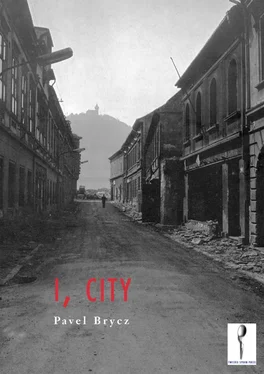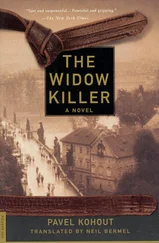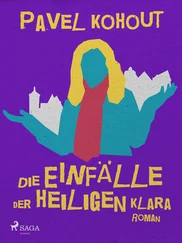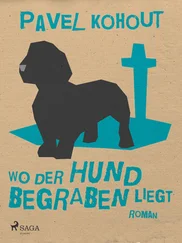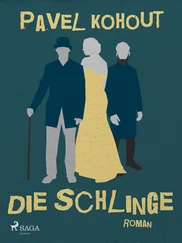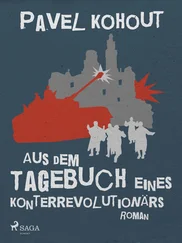Pavel Brycz - I, City
Здесь есть возможность читать онлайн «Pavel Brycz - I, City» весь текст электронной книги совершенно бесплатно (целиком полную версию без сокращений). В некоторых случаях можно слушать аудио, скачать через торрент в формате fb2 и присутствует краткое содержание. Год выпуска: 2006, Издательство: Twisted Spoon Press, Жанр: Современная проза, на английском языке. Описание произведения, (предисловие) а так же отзывы посетителей доступны на портале библиотеки ЛибКат.
- Название:I, City
- Автор:
- Издательство:Twisted Spoon Press
- Жанр:
- Год:2006
- ISBN:нет данных
- Рейтинг книги:5 / 5. Голосов: 1
-
Избранное:Добавить в избранное
- Отзывы:
-
Ваша оценка:
- 100
- 1
- 2
- 3
- 4
- 5
I, City: краткое содержание, описание и аннотация
Предлагаем к чтению аннотацию, описание, краткое содержание или предисловие (зависит от того, что написал сам автор книги «I, City»). Если вы не нашли необходимую информацию о книге — напишите в комментариях, мы постараемся отыскать её.
Dubliners
I, City
I, City — читать онлайн бесплатно полную книгу (весь текст) целиком
Ниже представлен текст книги, разбитый по страницам. Система сохранения места последней прочитанной страницы, позволяет с удобством читать онлайн бесплатно книгу «I, City», без необходимости каждый раз заново искать на чём Вы остановились. Поставьте закладку, и сможете в любой момент перейти на страницу, на которой закончили чтение.
Интервал:
Закладка:
Man is insignificant and crazy.
He shouts under the arch of the bridge and exults over the echo.
He imagines his reflection in the mirror will remain there forever. He is conceived and he fits into his mother’s belly. He dies and fits into a small tin box.
And yet it has occurred to me that Man can be compared to a cloud. Neither are what they seem to be.
Whoever has imagination can see their long lances, the sad heights, and the most virtuous acts performed in the name of a love.
I am a city. I’m not a tree. But I know the tree. And I also know the wood from the tree. And the paper from the wood of the tree I’ve seen innumerably.
But only a person with imagination, a man who once stood in the mud with his head bent back observing the dark clouds above him, could on the paper from the wood of the tree of this world of this life on this planet of this universe of this infinitude, write to another person a confession of this kind:
I know I love you, even if I kid you,
And your craziness I praise to the skies,
We are the only men betrothed
You, Quixote, and me, your Cervantes.
Remember, Quixote, when once again in your armor
You ride at the mills and once again they all laugh at you,
Remember, Quixote, your author fears you,
Afraid you would stop loving him.
That you would leave him, because he didn’t make you divine,
But wanted to know the whole truth of the soul.
Your author, Quixote, himself became more than ridiculous.
His craziness becoming crazed — crazy through and through.
AN APPEARANCE, PUPPY
How is it that when the children of the city are still just puppies, they prance about in my streets? How is it that when they hardly know how to walk, they already know how to run, to tear, fly about, spin, dash, sprint and scream at the apartment blocks as if they were the trees of the forest? How is it, when they should only know to fulfill their merit badges and to play their puppy-love games? They also know how to get into the orchard, whenever they want to, and how to tear apples both for their sweet taste and for the sheer joy of it all — joy, because adults lurk in the orchard. There, the grownups have already learned how to walk and forgotten how to run and have treated themselves to German shepherds; not to foster friendships with the puppies, only to frighten them, as these German shepherds keep watch over the apples and know how to tear and to bite and to run just like the puppies do, only much faster.
I am again in Vtelno, I, city, with my children, as the boys bring over the fence apples as if from the Garden of Eden. And just as in the days of the Corrida in sunny Spain when the bulls are driven out from their stalls and into the streets to undertake a frantic chase and courageously fulfill their merit badges, here the guardians of the apples hold gladiator games between the German shepherds and the puppies.
The boys escape from yellow fangs over the ugly barbed wire. The German shepherds smack the fence with their muzzles. It’s a close shave. They make it by only a hair.
This time, my puppies are faster.
Breathing heavily, they bite into the Edenic fruits of childhood, seized in their frantic escape.
What’s left for the German shepherds and the grownups are only the rotting apples fallen to the grass.
Thanks to their pride, they have only as much as the worms.
AN APPEARANCE, FINAL
People know they can’t run away from themselves.
If they do run away, they know they’ll eventually come back.
A man takes leave of his childhood, quits babbling, begins thinking and becomes an adult. He’s reasonable, and the whole world belongs to him. Until he begins to come back to himself. Then, he suddenly shrinks, and when he wants to tell the people around him that he’s seen Paris, Rome and Cairo, and personally knows Sophia Loren, he finds himself beginning to babble again, as he discovers himself coming back to the stage of his childhood.
He hasn’t gone far.
Who will be willing to listen to his babble now? Where did he ever find comprehension? Where did they understand him then, where will they understand him now? Is there such a place to which he can come back, from Paris, Rome, Cairo, from a couple of loves, from a couple of equations among many unknowns, from the inscrutable breast of Sophia Loren? Is there such a place he can get to by train? Is there such a place, where all the train conductors are poets? Is there such a train, such a train station, whose conductors would all recite verse to him? Is there such a poem that can be understood by all? And what are its words?
MOST OR BUST!” the conductors would tell him at the train station.
We, Translators
Until the 15th century, in which an enormous irrigation project began, a vast swamp known as Komořanské jezero (Komoransky Lake) covered nearly the entire area of the Bohemian city of Most, in what is now the northwestern Czech Republic. A system of bridges facilitated crossing into Saxonia, the neighboring duchy of a Holy Roman Empire then just beginning the reform of its millennium-long Reich, in what is now easternmost Germany. More than metaphorically obvious, then, the Czech word most means — physically — “bridge.”
Brüx was its name in German, an ancient form of the modern Brücke, and its earliest settlement was to become known by the name of one of its more prominent crossings, the Latinate-Slavonic Gnevin Pons, or Gneva’s (Hněva’s) bridge. The nearby mountain was also named after this early, and largely unknown, landlord Gneva (Gneva is a Russified spelling, Hněva its Czech corollary), and a castle later built thereupon, thus expanding the city’s purview beyond its geological basin. This castle, Most’s most significant settlement, was largely destroyed by its own citizens toward the end of the Thirty Years’ War to prevent it from falling into the hands of the occupying Swedes. Most has a unique history of being decimated by its own citizens.
Since time immemorial, the area of and around Most has been one of the most densely populated in all of Central Europe — first settled by the Celts, then by various Germanic tribes, and in the sixth century by the Slavs, ancestors of the Czech nation. When this area was drained, Most went from being a minor provincial settlement to the largest imperial city in northwestern Bohemia, under the jurisdiction of the Přemyslids, the dynasty of the first Czech kings that ruled in Prague. One of that lineage’s most notable descendants, and a passing persona in the volume at hand, was Agnes Přemyslid, daughter of the King of Bohemia; she founded the first hospital in all of Bohemia, in Prague, in addition to Most’s convent of the Order of St. Clara, whose namesake (1193–1253) had been a correspondent and close friend. Before the 15th century and the discovery of brown coal, which is known as lignite — a fuel of the lowest quality that when burned produces only about half as much heat as do other, blacker, bituminous coals — tin, iron, copper and silver were mined in the vicinity as principal occupation, though inhabitants of the city also worked in light manufacture; vineyards around Hněvín were tended by the monks of the city’s cloister.
Most’s decline — which continues to this day — began in earnest with the wHabsburgs, firstly with their rapacity for infrastructure, especially with regard to the obtainment of natural resources, and secondly with the imperial assertion of their own values, epitomized by an institutionalized oppression of Protestantism. This decline is adumbrated by the author of this book, as he has the “I” of his city speak about Blaník being “exchanged” for Bílá hora. Blaník is a mountain southeast of Prague where, according to legend, knights repose in a sort of perpetual slumber, only to rouse and ride out in a time of need to save the Czech nation from impending destruction. Bílá hora (White Mountain) was the site of the 17th-century Habsburg victory over the Czech Estates, resulting in a renewed dark ages in which Czech culture was largely suppressed. Century-long construction began on the late-Gothic Church of the Annunciation of the Virgin Mary, Most’s most notable historic landmark (here often called the “Deacon’s Church”), two years after the city suffered its greatest fire in 1515. Built by the German architect Jacob Heilmann on the site of an earlier Gothic and Romanesque church, it was this structure that was famously relocated by a distance of over eight-hundred meters from its original foundations during the incredible decade-long destruction of Most, which was begun in the mid-1960s to facilitate the pursuit of the great quantity of lignite to be found beneath the Old Town. This church — foreign-built, foreign-Catholic — was one of the only buildings that survived the systematic destruction of Old Most. It was moved to stand next to Most’s most venerable set of structures, creating a dismal sort of historic district: a complex of chapel and hospital, whose oldest f oundations date from the 13th century, under the patronage of sv. Duch — the Holy Spirit.
Читать дальшеИнтервал:
Закладка:
Похожие книги на «I, City»
Представляем Вашему вниманию похожие книги на «I, City» списком для выбора. Мы отобрали схожую по названию и смыслу литературу в надежде предоставить читателям больше вариантов отыскать новые, интересные, ещё непрочитанные произведения.
Обсуждение, отзывы о книге «I, City» и просто собственные мнения читателей. Оставьте ваши комментарии, напишите, что Вы думаете о произведении, его смысле или главных героях. Укажите что конкретно понравилось, а что нет, и почему Вы так считаете.
